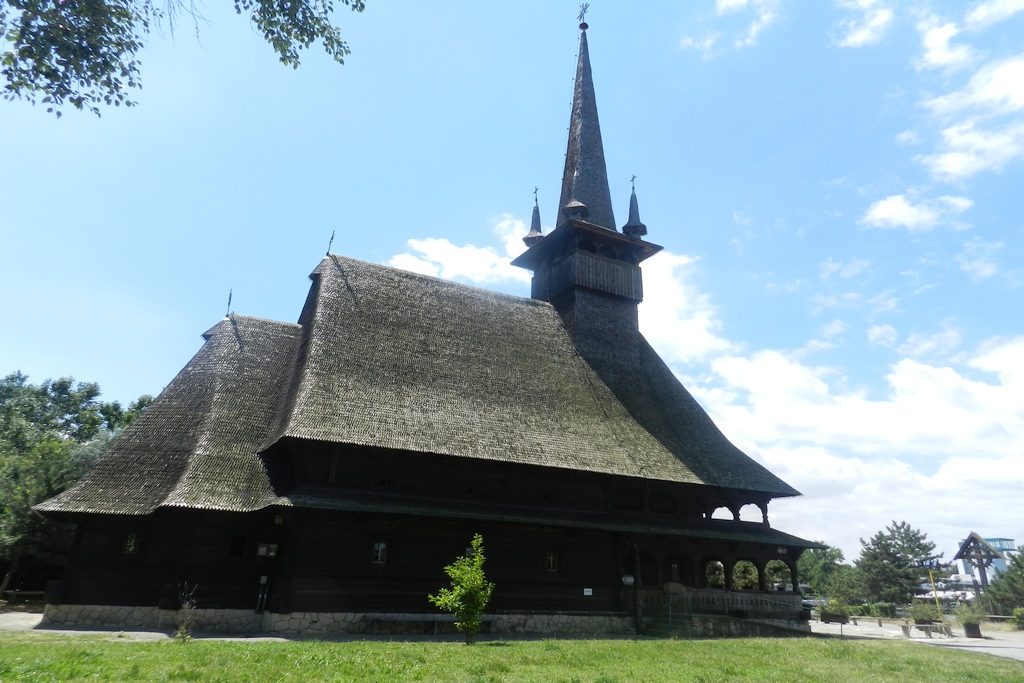

“SAINT MINA” CHURCH is an unique location, an oasis of tranquility within Constanta. The place for worship is located close to the Tabacariei Park, on the lake of the same name, away from city noise. The cornerstone was laid on 31 July 1994 by his Eminence Lucian, Archbishop of Tomis. The beautiful church was built between 1995 – 1997 by architect Nicolae Goga plans and respects the smallest details of Maramures traditional style. During building works of the church, the divine services were officiated in a military tent until 1997, when on 11 November, the day honoring the St. Martyr M Mine, was celebrated the first liturgy in the new church.
Besides beauty, it is the height impressive church, whose steeple measures 43 meters and can be seen from many areas of the city. For this reason the Church “St. Mina” din Constanta occupies a well-deserved place on the list of highest wooden church in our country.
Inside the place of worship impresses by its simple beauty and austerity, the entire the furniture and all decorative items ate wood carving. The iconostasis is the main element that draws attention when you step inside the church, and the painting which covers it was painted by George Sorin Nicolae from Bucharest.
The interior furniture, designed by architect Daniel Sabau from Alba-Iulia integrates the ensemble through simplicity and sophistication.
The Church keeps the retangular plan, ship-shaped, with all the specific compartments in a artful merge of Maramures traditional elements. The roof is only wood, the shingle is dovetailed, without metallic elements. The general style of decoration is the Gotthic one, identified especially in implementing of the iconostasis, according to Brancoveanu style of its lower side (royal doors and deacon’s). As annexes of the central building, in the southern part we can find the door specific for Maramures with 4 small towers, In the southeast corner of the church we can find the summer sanctuary; Crucifix in front of the church is the gift left by carpenters craftsmen being framed in a decorative element.
On the north side of the church we can find the bell tower worked in the same style, sheltering large bells, the other two smaller, being in the tower.
